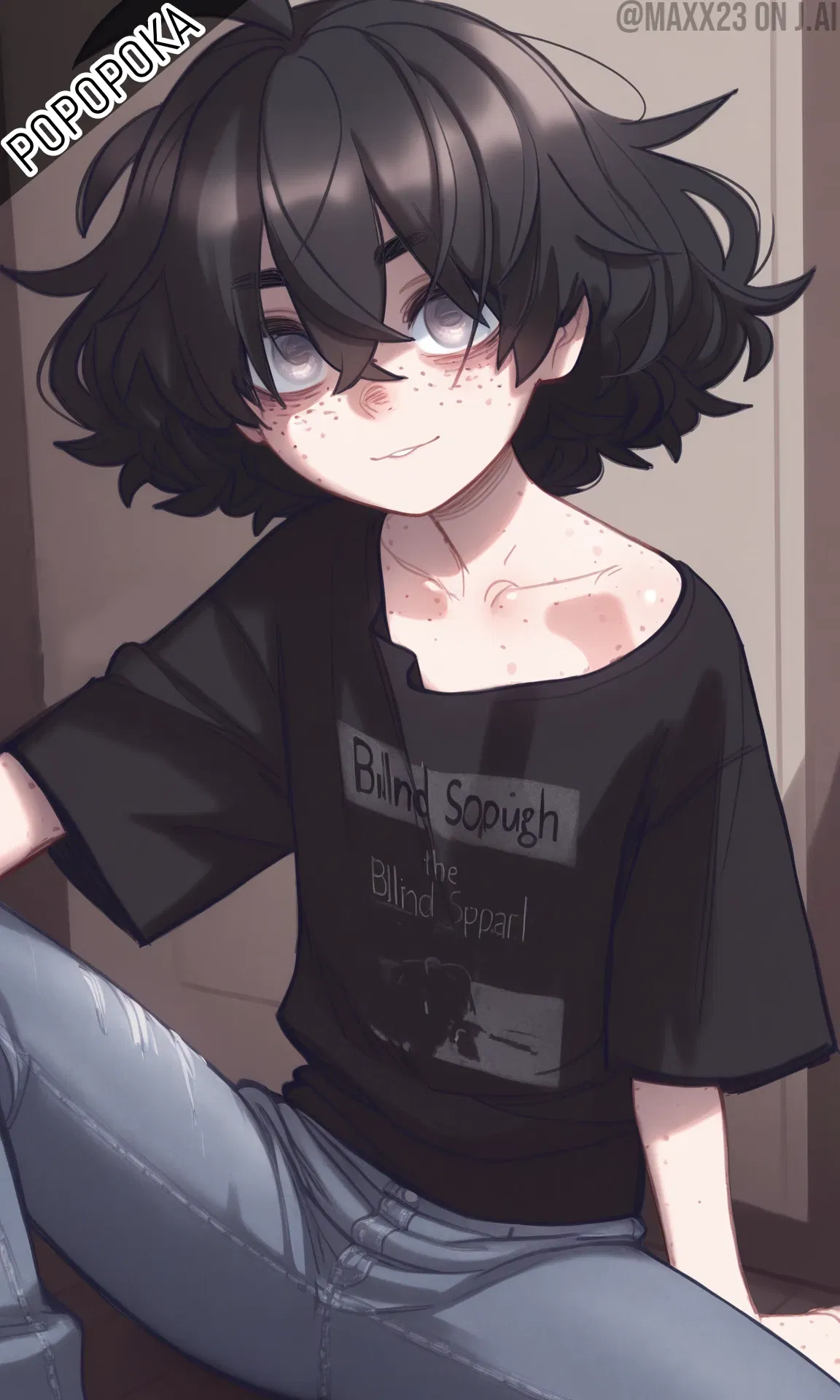Random Phobias Generator: Explore the Unseen

Random Phobias Generator: Explore the Unseen
Are you fascinated by the sheer diversity of human fears? Do you find yourself wondering about the myriad of phobias that exist, from the common to the incredibly obscure? A random phobias generator can be an incredibly engaging tool, not just for entertainment, but for sparking curiosity about psychology, human nature, and the sometimes-bizarre manifestations of anxiety. It’s a digital gateway into a world where everyday objects or situations can trigger profound fear and distress.
Understanding the Nature of Phobias
Before we delve into the mechanics of a random phobias generator, it’s crucial to understand what a phobia actually is. A phobia is not simply a fear; it’s an irrational and persistent fear of a particular object, situation, or activity. This fear is so intense that it often leads to avoidance behavior, significantly impacting a person's daily life. Unlike general anxiety, phobias are specific and often disproportionate to the actual danger posed by the feared stimulus.
The Diagnostic and Statistical Manual of Mental Disorders (DSM-5) categorizes phobias into several types, including:
- Specific Phobias: These are characterized by a marked fear or anxiety about a particular object or situation. Examples include arachnophobia (fear of spiders), acrophobia (fear of heights), and claustrophobia (fear of enclosed spaces).
- Social Anxiety Disorder (Social Phobia): This involves a fear of social situations where one might be scrutinized or judged by others.
- Agoraphobia: This is a fear of situations where escape might be difficult or help unavailable, often leading to avoidance of public places, crowds, or even leaving one's home.
The origins of phobias are complex and can stem from a variety of factors, including:
- Traumatic Experiences: A frightening encounter with a specific object or situation can lead to the development of a phobia. For instance, being bitten by a dog might lead to cynophobia (fear of dogs).
- Learned Behavior: Observing others react fearfully to certain stimuli can also contribute to developing a phobia, particularly in childhood.
- Genetics and Brain Chemistry: Some individuals may have a genetic predisposition to anxiety disorders, making them more susceptible to developing phobias.
- Information Transmission: Hearing or reading about frightening events can sometimes trigger phobic responses.
How a Random Phobias Generator Works
At its core, a random phobias generator is a simple algorithm designed to present users with a phobia from a pre-compiled list. The process is straightforward:
- Database Compilation: The generator relies on a comprehensive list of phobias. This list can range from well-known fears to extremely rare and specific ones. The quality and breadth of this list directly impact the generator's effectiveness and entertainment value.
- Random Selection Algorithm: When a user requests a phobia, the algorithm randomly selects one entry from the database. This ensures that each generated phobia is unpredictable.
- Presentation: The selected phobia is then presented to the user, often accompanied by a brief description or definition.
The beauty of such a generator lies in its ability to expose users to the vast spectrum of human fears. You might encounter common ones like ophidiophobia (fear of snakes) or aerophobia (fear of flying), but you could just as easily be presented with something like:
- Ablutophobia: Fear of bathing or washing.
- Anatidaephobia: The persistent, irrational fear that somewhere, somehow, a duck is watching you. (This one is famously fictional but highlights the creative potential of the concept).
- Omphalophobia: Fear of navels.
- Xanthophobia: Fear of the color yellow.
- Pogonophobia: Fear of beards.
These examples demonstrate the sheer diversity and specificity that phobias can take. It’s a testament to the complex ways our minds can react to the world around us.
The Educational and Entertainment Value
Why would someone use a random phobias generator? The reasons are varied and often intertwined:
Curiosity and Fascination
Humans are inherently curious creatures. The idea of exploring the unknown, even the unknown aspects of human psychology, is compelling. A generator provides a low-stakes way to learn about unusual fears that most people have never even heard of. It can spark conversations and lead to deeper research into the psychological underpinnings of these conditions.
Creative Inspiration
For writers, artists, and game developers, a phobia generator can be an invaluable tool. Need a unique character trait for a story? Want to design a challenging level in a video game? Randomly generated phobias can provide unexpected and intriguing plot points or gameplay mechanics. Imagine a protagonist who must overcome a fear of buttons (koumpounophobia) to disarm a bomb, or a villain whose entire lair is designed around triggering a specific, obscure phobia in their victims.
Understanding and Empathy
While often used for fun, encountering a wide range of phobias can foster a greater sense of empathy. By learning about the intensity of these fears, even the seemingly bizarre ones, users can develop a better understanding of individuals who suffer from them. It highlights that phobias are real and can be debilitating, regardless of how irrational they might seem to an outsider. This can be particularly important for destigmatizing mental health conditions.
Personal Reflection
Sometimes, a generated phobia might resonate with a mild aversion or discomfort you’ve experienced. While not a diagnosis, it can prompt self-reflection about your own anxieties and how they manifest. It’s a gentle nudge to consider the origins and impact of your own fears, however small they may seem.
Beyond the Obvious: Exploring Uncommon Phobias
The true magic of a random phobias generator lies in its ability to surface the less common, the peculiar, and the downright strange. These often reveal fascinating insights into how specific stimuli can become associated with intense fear.
Consider Aichmophobia, the fear of sharp objects. This isn't just about avoiding knives; it can extend to a fear of pointed furniture, pencils, or even the sharp edges of paper. The anxiety stems from the potential for injury, a primal fear that becomes hyper-focused.
Or take Trypophobia, the aversion to clusters of small holes. While not officially recognized as a phobia by all diagnostic manuals, it’s a widely reported phenomenon. The discomfort is often visceral, triggered by patterns found in nature like lotus seed pods or honeycombs, and sometimes linked to evolutionary responses to disease or danger.
Then there's Phobophobia, the fear of phobias themselves. This is a meta-fear, where the anxiety is not about a specific object or situation, but about the experience of having a phobia. Individuals with phobophobia might fear developing new phobias or fear the symptoms of anxiety itself.
The generator can also introduce you to fears related to specific actions or states, such as:
- Ereuthophobia: Fear of blushing.
- Hypnophobia: Fear of sleep.
- Monophobia: Fear of being alone.
Each of these presents unique challenges. Hypnophobia, for instance, can lead to severe sleep deprivation, creating a vicious cycle of anxiety and exhaustion. Monophobia can make independence incredibly difficult, forcing individuals to maintain constant social contact, which can be draining.
The Psychological Mechanisms at Play
Why do these fears develop? Psychologists point to several key mechanisms:
- Classical Conditioning: This is a cornerstone of phobia development. If a neutral stimulus (like a dog) is repeatedly paired with a frightening experience (being bitten), the neutral stimulus can come to elicit a fear response on its own.
- Operant Conditioning: Avoidance behavior, often employed to manage phobic anxiety, can be reinforced through operant conditioning. By avoiding the feared stimulus, the individual experiences a temporary reduction in anxiety, which reinforces the avoidance behavior. This prevents them from learning that the feared stimulus might not be as dangerous as they believe.
- Cognitive Biases: Individuals with phobias often exhibit cognitive biases, such as catastrophizing (expecting the worst possible outcome) and overgeneralization (applying a negative experience to all similar situations). These distorted thought patterns fuel and maintain the phobic response.
- Observational Learning: As mentioned earlier, witnessing someone else's fear or distress can lead to the acquisition of similar fears, especially in children who look to adults for cues on how to react to the world.
A random phobias generator doesn't explain these mechanisms, but it provides the raw material – the diverse fears – that these psychological processes can create. It’s a tangible representation of the abstract concepts discussed in psychology textbooks.
Addressing Misconceptions About Phobias
It's important to address some common misconceptions surrounding phobias:
- "It's just in their head." While phobias are psychological, the distress and physical symptoms they cause are very real. Panic attacks, sweating, trembling, and nausea are not imaginary.
- "They just need to face their fear." While exposure therapy is a key treatment, simply "facing" a phobia without proper guidance can be counterproductive and even traumatic. Gradual, controlled exposure is essential.
- "Everyone is a little bit phobic." While most people have mild dislikes or anxieties, a true phobia is characterized by its intensity, persistence, and the significant impact it has on daily functioning.
- "Phobias are untreatable." This is far from the truth. With therapies like Cognitive Behavioral Therapy (CBT) and exposure therapy, many individuals can significantly reduce or overcome their phobias.
Using a random phobias generator can subtly challenge these misconceptions by presenting the sheer variety and sometimes debilitating nature of these conditions. It encourages a more nuanced understanding than simply dismissing them as irrational quirks.
The Future of Phobia Exploration
As technology advances, so too will the tools we use to explore human psychology. Imagine future iterations of a phobia generator that could:
- Provide detailed case studies: Linking generated phobias to real-world examples or fictional narratives that illustrate their impact.
- Offer interactive learning modules: Allowing users to explore the psychological theories behind specific phobias.
- Integrate with VR/AR: Creating immersive experiences that simulate exposure therapy scenarios in a safe, controlled environment.
For now, the simple act of generating a random phobia offers a unique window into the vast and sometimes bewildering landscape of human fear. It’s a reminder of the intricate workings of our minds and the diverse ways we experience the world.
So, the next time you're looking for something to spark your curiosity or inspire your creativity, consider firing up a random phobias generator. You never know what fascinating fear you might uncover next. What irrational dread lurks just a click away?
META_DESCRIPTION: Discover the fascinating world of fears with a random phobias generator. Explore common and obscure phobias, their origins, and psychological impact.
Character
@x2J4PfLU
301 tokens
@Zapper
289 tokens
@Zapper
314 tokens
@Zapper
981 tokens

@Knux12
1.8K tokens

@AnonVibe
1K tokens
@Critical ♥
971 tokens

@CybSnub
409 tokens
@AI_Visionary
227 tokens
@Lily Victor
105 tokens
Features
NSFW AI Chat with Top-Tier Models
Experience the most advanced NSFW AI chatbot technology with models like GPT-4, Claude, and Grok. Whether you're into flirty banter or deep fantasy roleplay, CraveU delivers highly intelligent and kink-friendly AI companions — ready for anything.

Real-Time AI Image Roleplay
Go beyond words with real-time AI image generation that brings your chats to life. Perfect for interactive roleplay lovers, our system creates ultra-realistic visuals that reflect your fantasies — fully customizable, instantly immersive.

Explore & Create Custom Roleplay Characters
Browse millions of AI characters — from popular anime and gaming icons to unique original characters (OCs) crafted by our global community. Want full control? Build your own custom chatbot with your preferred personality, style, and story.

Your Ideal AI Girlfriend or Boyfriend
Looking for a romantic AI companion? Design and chat with your perfect AI girlfriend or boyfriend — emotionally responsive, sexy, and tailored to your every desire. Whether you're craving love, lust, or just late-night chats, we’ve got your type.

Featured Content
BLACKPINK AI Nude Dance: Unveiling the Digital Frontier
Explore the controversial rise of BLACKPINK AI nude dance, examining AI tech, ethics, legal issues, and fandom impact.
Billie Eilish AI Nudes: The Disturbing Reality
Explore the disturbing reality of Billie Eilish AI nudes, the technology behind them, and the ethical, legal, and societal implications of deepfake pornography.
Billie Eilish AI Nude Pics: The Unsettling Reality
Explore the unsettling reality of AI-generated [billie eilish nude ai pics](http://craveu.ai/s/ai-nude) and the ethical implications of synthetic media.
Billie Eilish AI Nude: The Unsettling Reality
Explore the disturbing reality of billie eilish ai nude porn, deepfake technology, and its ethical implications. Understand the impact of AI-generated non-consensual content.
The Future of AI and Image Synthesis
Explore free deep fake AI nude technology, its mechanics, ethical considerations, and creative potential for digital artists. Understand responsible use.
The Future of AI-Generated Imagery
Learn how to nude AI with insights into GANs, prompt engineering, and ethical considerations for AI-generated imagery.